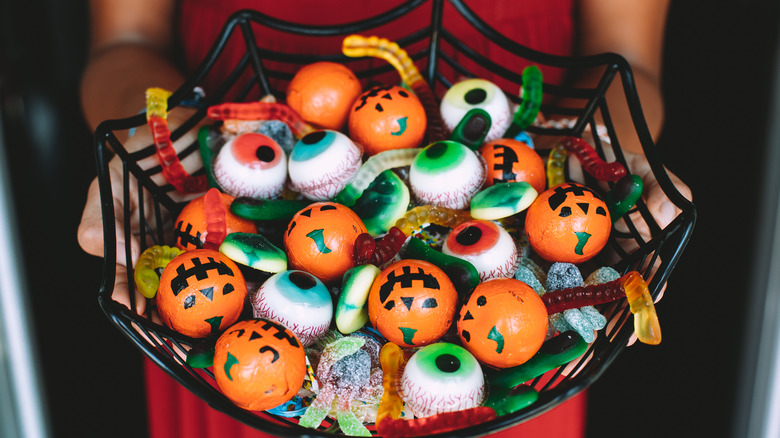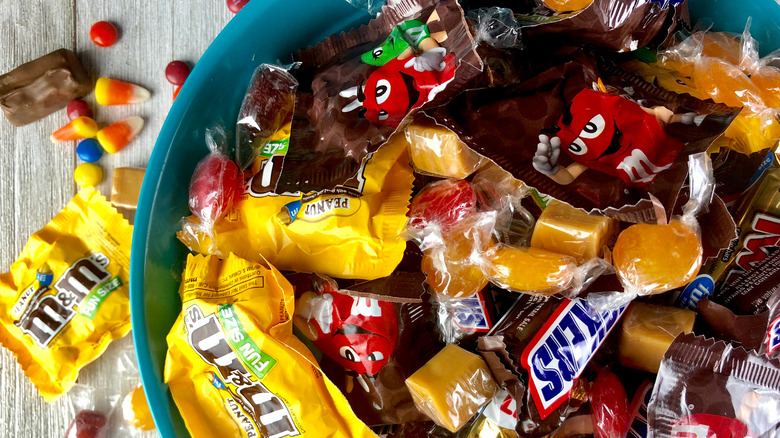This Formula Could Tell You Exactly How Much Candy You Need For Trick Or Treaters
It's that time of year again — cue the spooky music and roll in the dense fog. Halloween is upon us as is the age-old crisis. Child version: What should I be for Halloween? Should I tell mom now that I've changed my mind for the third time? Tween edition: Do I dress up or am I too old? Whose neighborhood could I go to where they wouldn't recognize me? Teenager debacle: Will my parents let me go to a party instead of trick-or-treating?
Adults have their own versions of Halloween challenges and ponder questions like, should I pursue that amazing costume I've been obsessing over all year, even if it means blowing all my free time and disposable income? What time do I let my kids go trick-or-treating? If I turn all the lights out and park the car on the street, can I avoid handing out candy?
Yes, the creepy holiday provokes an array of issues, but perhaps the biggest dilemma of all, facing all who dwell in a land reachable by trick-or-treaters is: How much Halloween candy do I need?
Of course, there are those who simply purchase multiple candy megapacks and keep the leftovers fr themselves. But for those who don't care for candy, there's a mathematical equation you can try.
A magic formula to help solve the Halloween candy problem
There are different ways of calibrating needs of course, especially when it comes to candy. But while we're going with this expansive interpretation, it's worth noting that there have been numerous attempts at establishing exactly how much candy to buy. Popular Mechanics has devoted serious time and attention to the issue and acknowledges the importance of psychological factors as part of the picture. Inflation is the worst it's been in 40 years, especially of the candy kind, and certainly will play a part in how much shoppers buy. To that end, Apartment Therapy has come to the rescue. Like any formula, however, this one requires a few data points to work its magic.
There are four key elements to plug into the candy-buying equation. Look at how many servings are in a bag of candy and determine approximately how many kids are in your neighborhood. The third element is the quality of Halloween decorations in your neighborhood, based on a 5-point scale, and finally, the day's weather on a 5-point scale. Per Apartment Therapy, divide the candy by the estimated number of kids, multiply by the sum of the decorations and weather added together, then divide by two. Voilà!
Too much math for you? You can also try out the Omni Trick-or-Treat Calculator. And hey — if your costume doesn't end up causing the splash you'd hoped, you can still rest easy knowing you bought the exact right number of Reeses.

